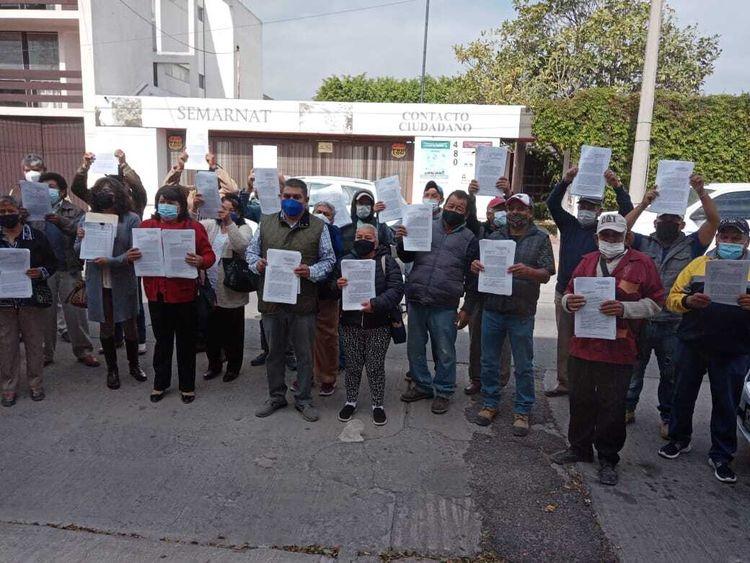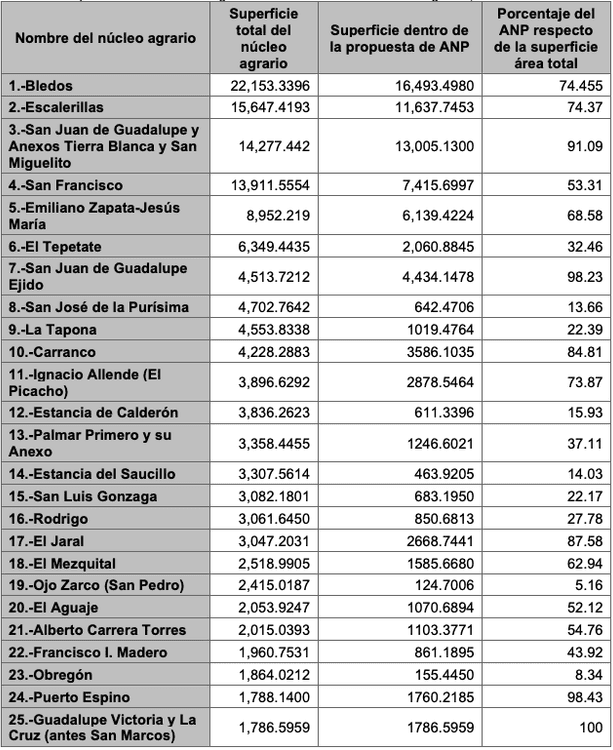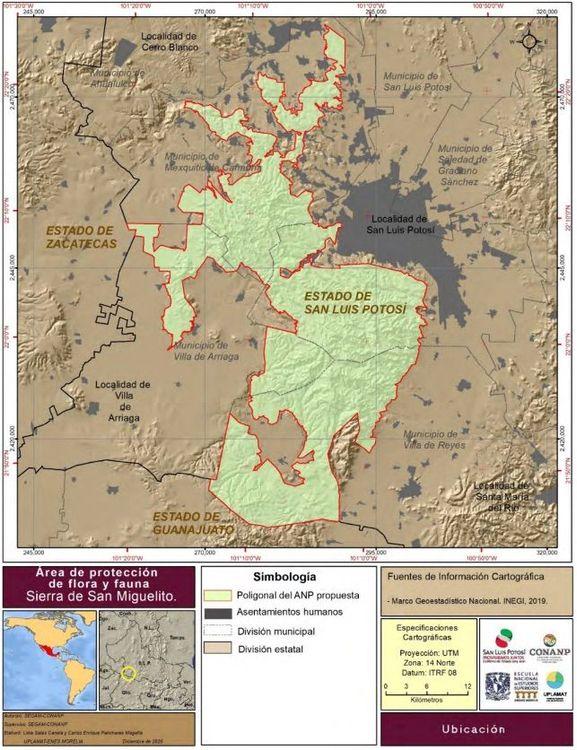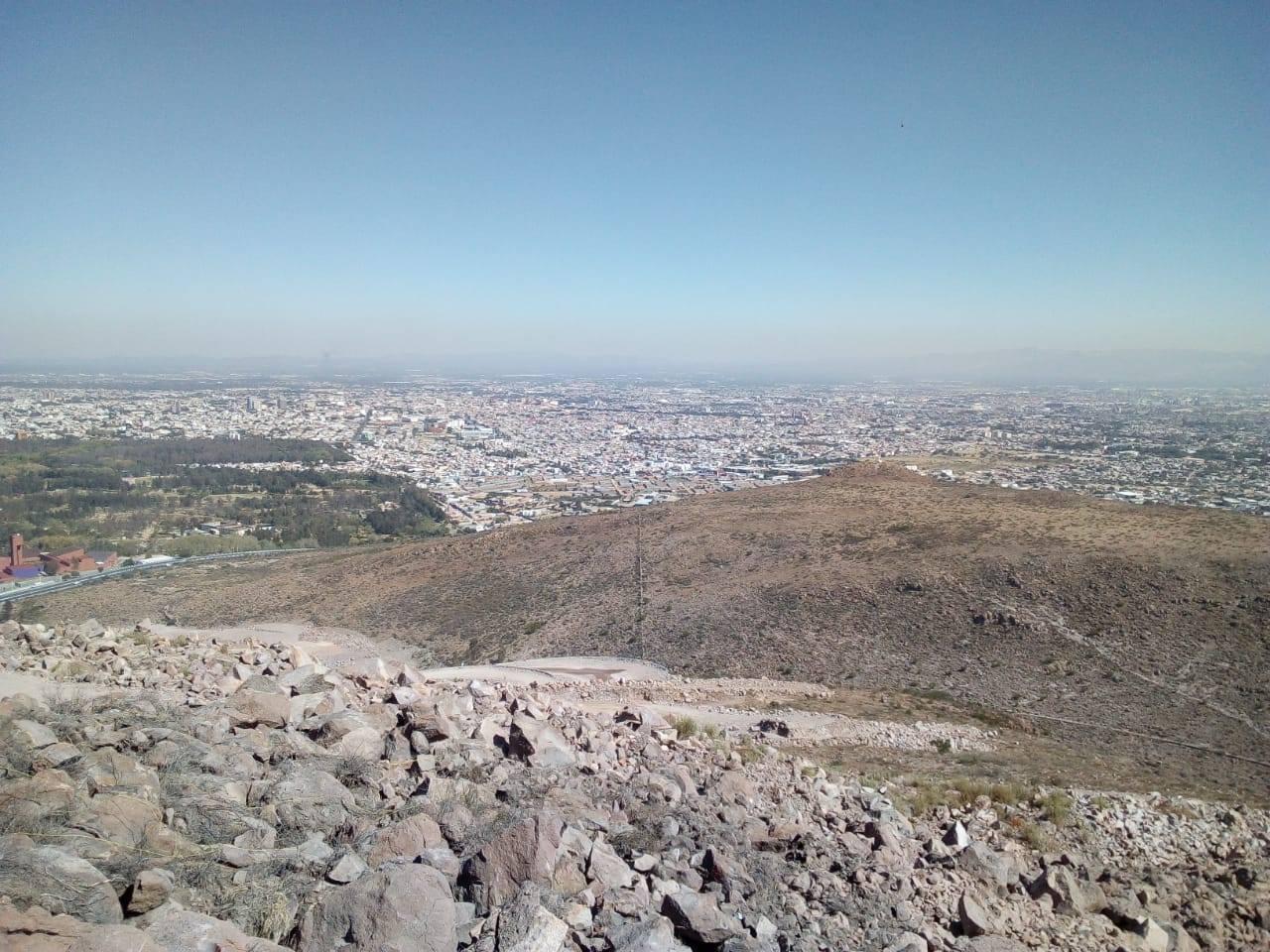After its official publication, the Protected Natural Area (ANP) of the Sierra de San Miguelito has been met with protection from ejidatarios and community members of San Juan de Guadalupe, in San Luis Potosí. The purpose is to stop a federal decree that, they say, was taken without considering the proposals of the inhabitants involved and invades their plots.
“In the ejido, we do want to preserve the Sierra de San Miguelito, we know that it is necessary and that we cannot do it as someone specialized could. Yes, we agree with the preservation, but not with the outrage (by the authorities),” explained Luis Fernando Zúñiga, secretary of the ejidal commissioner of San Juan de Guadalupe.
The federal decree published last December 13 states that the Sierra de San Miguelito region, located in the municipalities of Mexquitic de Carmona, San Luis Potosí, Villa de Arriaga and Villa de Reyes, is exposed to human settlements, industry, growth of the agricultural frontier, extensive livestock farming and recurrent forest fires.
In total, more than 111,000 hectares were established for the protection and conservation of biological diversity. The list of birds included in NOM-059-SEMARNAT-2010 for endangered species, such as the golden eagle, stands out.
During the interview with Causa Natura, Secretary Zúñiga recounted the process of meetings, from October 2020 to the end of 2021, with authorities from the Ministry of Environment and Natural Resources (Semarnat), the National Commission for Protected Natural Areas (Conanp), the San Luis Potosí Agrarian Attorney's Office, and others.
“They rely on the fact that they are not taking away our land, which is still ours, which is not a dispossession. [...] Our amparo was just presented (the first week of January), we are asking to leave out the parcelled areas that are 800 hectares that were allocated to us in 1997; 400 hectares that were allocated to us in 2010, and approximately 130 hectares that are in the process of being allocated,” he said.
The ejido of San Juan de Guadalupe recognizes that in the middle of last year it had the proposal to give up 500 hectares in the area closest to the Sierra. Therefore, the decision was made to pay for a technical study with the same guidelines as the Prior Justification Study conducted by Conanp. The intention was to know how suitable their land was to be a Protected Natural Area.
Luis Fernando Zúñiga recognizes that the technical study also served as an “awareness-raising exercise”, since of the 500 hectares that were originally planned to be negotiated, 2,440 (about 50% of the land) would have to be ceded because they met the conservation criteria.
The technical study of the ejido was well received after presenting it at a meeting with the coordinator Araceli Pais, who represented the head of Semarnat, María Luisa Albores. According to the ejidatario, information was exchanged until the agency cut off communication.
Until almost three months later, last November, when they received a letter from the authorities rejecting their proposal to give up the 2,440 hectares. Instead, 4,400 hectares (98% of the ejido) would be established in the federal decree.
For this publication, we spoke with the environmental consultancy behind the technical study of the ejido, as well as with researchers from the National School of Higher Education Unidad Morelia (ENES Morelia) of the National Autonomous University of Mexico (UNAM) who worked on the Prior Justification Study led by Conanp, to learn about the evaluation of both sectors.

Demonstration by ejidatarios from San Juan de Guadalupe in 2020 prior to the public consultation of the Prior Justification Study: Photo: Ejido San Juan de Guadalupe
Two studios and some parcelled land
Every Protected Natural Area needs a Prior Justification Study (by Semarnat and Conanp) to identify and justify its conservation. In the case of the Sierra de San Miguelito, Fernando Rosete Verges and Gerardo Hernández Cendejas, both doctors in Geography and researchers from ENES Morelia, were part of the team that carried out this study.
Although work began in January 2020, the lack of fieldwork has been one of the main criticisms by ejidatarios and community members of San Juan de Guadalupe.
“The first part of the technical study ended on September 15, 2020 and yes, we did field verification tours, although due to the context of the pandemic we couldn't spend much time in the field and take samples as we would have liked,” said Dr. Rosete in an interview.
However, databases and sources, both from Conanp and from the National Commission for the Knowledge and Use of Biodiversity (Conabio), were used to connect with each point. And after the first installment, work continued on the studio until May 2021.
As part of the final results, more than 109,000 hectares were proposed, of which more than 4,000 belonged to the ejido of San Juan de Guadalupe, a percentage equivalent to 98% of its total land.

Surface of agricultural areas within the Sierra de San Miguelito, San Luis Potosí. Source: Prior Justification Study for the declaration of a Flora and Fauna Protection Area.
Given the results, the ejidatarios decided to carry out their own technical study at the independent consultancy firm Barrera Villasuso, specialized in Urban Planning and Urban Planning with an emphasis on environmental procedures and litigation.
“We (the consultant) participated technically based on the same criteria as the Prior Justification Study. In other words, we did not give any other argument other than the one they themselves marked in the study, we only used their same information and their same sources to tell them that there was an error in the surface where the parcelled areas do not have to be in the ANP,” said Marianela Villasuso, consultant in land planning and the environment.
Villasuso also added that the study sought to support the ejido's negotiations with Semarnat and Conanp, but without confronting the authority, “it wasn't a question of saying that your previous study is poorly done or that what you said was not true.”
After the results of the study, they concluded that the parcelled areas did not meet the conservation nature necessary to be an ANP. Mainly because they are urban areas far from the core area of the Sierra de San Miguelito. So, only 2,440 hectares of the more than 4,000 hectares proposed by the Prior Justification Study could be transferred.
When asking ENES Morelia researchers about this, Dr. Rosete answered that “there is in the collective imagination the idea that the Sierra is only the area where there are trees and the rest are not identified as part, nor is the importance of areas with desert scrub recognized. All the areas where they say that there are no mountains, that there are no trees, that it is not necessary to protect, if you look in detail you will find a large number of endemic cacti and reptiles that are elements of conservation”.
For his part, Dr. Gerardo Hernández added that in addition to conservation, there are also important historical and cultural elements such as cave paintings or the Desert Church.
“We also insist a lot on the proposal to take care of the issue of dams. The layout of the polygon is due to the protection of the basins of the main dams found in the Sierra (San José-Los Pilares Dam and San Pablo Dam, in the center and north of the ANP, as well as the Arroyo Altamira and Arroyo el Puerquito basins),” said researcher Hernández.
Both researchers recognize that the Prior Justification Study can always be perfected.

Delimitation of the polygonal of the proposed ANP. Source: Prior Justification Study for the declaration of the Flora and Fauna Protection Area.
Political decision and real estate
In addition to the issue of the declaration of the Sierra de San Miguelito, there is also the name of President Andrés Manuel López Obrador, who on his 2019 work tour accepted the request to establish an ANP in the municipalities of Mexquitic de Carmona, Villa de Arriaga and Villa de Reyes, San Luis Potosí.
The name of La Sierra reappeared in national media at the end of last July when journalist Julio Hernández, known as Julio Astillero, reported that the proposed ANP had irregularities and allowed real estate agents to enter a project called “Las Cañadas”.
For this report, interviews were also requested with the coordinator of Semarnat, Araceli Pais; as well as César Sánchez Ibarra, Director General of Conservation for Development of Conanp, and Lilián Torija Lazcano, Director of Representativity and Creation of New Protected Natural Areas, who participated in the Prior Justification Study, as well as in negotiations with ejidatarios, community members and other sectors involved, but until the closing of the delivery of this article, there was no response.
For its part, the ejido of San Juan de Guadalupe acknowledged that during the meetings there was an insistence on the part of the authorities to know if there were deals between ejidatarios with real estate projects or urban developers.
Secretary Zúñiga defended that ejidatarios are not related to any type of project, but he cannot say the same for the residents of the San Juan de Guadalupe community, in the same municipality of San Luis Potosí.
For this publication, the residents of the community were also contacted, but there was no response either



Comentarios (0)